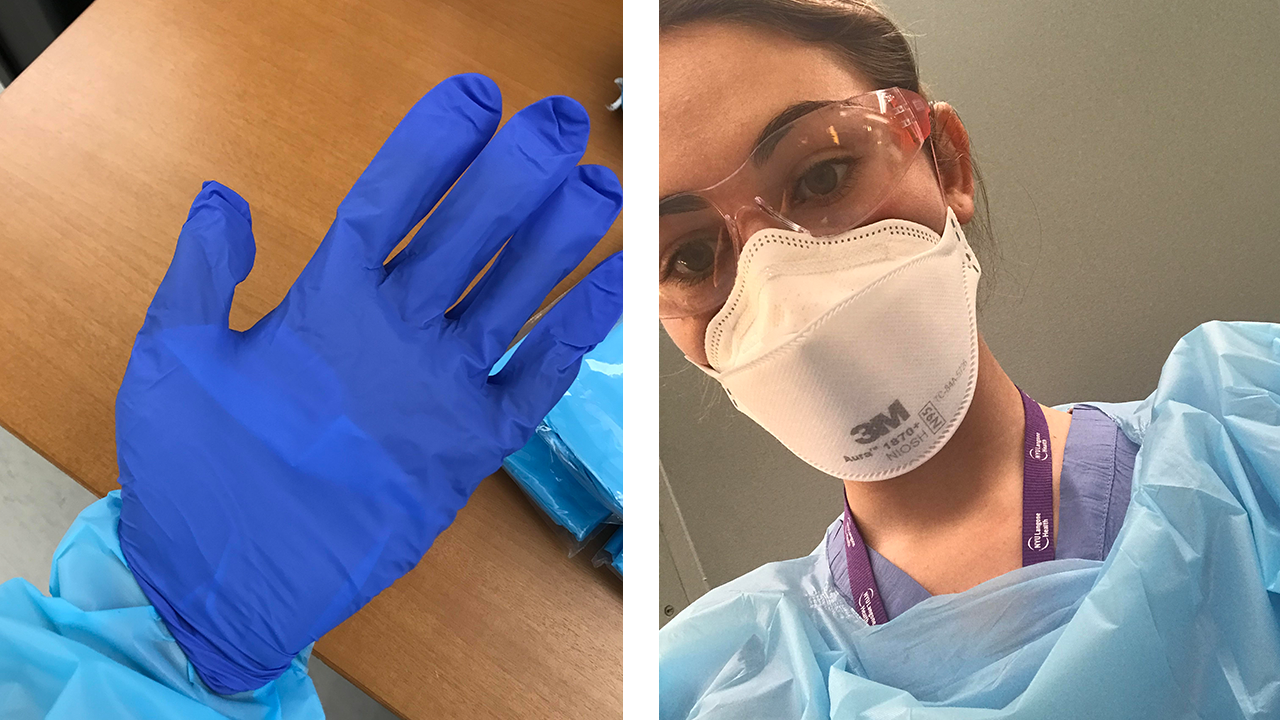Images of women with marks on their faces after wearing masks for long hours have gone viral. As these women work on the frontlines to fight a virus that is already infectious, they face the added risk of contracting the novel coronavirus because of the many issues they have with personal protective equipment (PPE).
As of 2019, women make up a large percentage of healthcare workers in the United States. But nurses are the nation’s largest healthcare profession, and are the most hands-on with patients. In the United States there are 3.8 million registered nurses (RNs) and 85% of them are women.
An informal survey conducted by students at CUNY’s Craig Newmark Graduate School of Journalism of 27 female medical workers in the United States found they had experienced discomfort and problems accessing appropriate equipment during COVID-19. 92% said they had experienced shortages. Others described PPE that didn’t fit correctly or slowed them down in the course of their normal work.
One healthcare worker wrote that her face shield, attached to her regular surgical mask, would detach and dangle off of her face and even fall onto patients while taking temperatures or doing finger sticks. “I touched my face more often to adjust the face shield than I would have otherwise,” she wrote. She also said the duckbill-style N95 masks provided by the hospital caused blisters on coworkers.
Another respondent said she experienced difficulty with an N95 respirator mask because of her hair: even with her hair pulled back, she had trouble getting the mask on and off quickly because the straps got in the way. Another described wearing protective gowns with rips and holes in them from prior use. “Starting this week, we have to return the mask that we wore for 12 hours to the hosp. Then reuse it after sterilizing it,” one respondent wrote. “We didn’t have enough face shields. My assistant manager made shield for my co-workers.” They described not having access to hairnets, reusing equipment frequently, and even bringing in their own masks from home.
Because COVID-19 is transmitted from person to person via the respiratory droplets in coughs and sneezes, PPE must be worn correctly before treating patients with COVID-19. Respirator masks like the N95 need to be fit-tested before attending patients during a pandemic. CDC guidelines to appropriately wear the mask say it should completely cover the nose and cheek area without any gaps, blocking air particles. They recommend N95 respirators over the use of surgical masks, but due to a shortage, ask that healthcare workers at the highest risk of contracting the disease be given the respirator mask before others.
“We have different faces. It is not comfortable and at the end of the day I have bruises on my nose, I have marks on my face,” said Nesha Shaw, a nurse supervisor at an outpatient hospital in California. “It’s one-size-fits-all but it’s not one-size-fits-all because we all have different faces.”
Her unit, primary care, deals with cases of COVID-19. Her hospital has tents set up in the parking lot with nurses ready to test those who are experiencing symptoms. Shaw and her colleagues try to adhere to CDC guidelines for healthcare personnel before entering the patient's room, which include wearing an appropriate sized isolation gown, an N95 respirator, face shields or goggles, and gloves.
Shaw said the face visors available in her hospital were uncomfortable for the women of the unit. Fortunately, she and her colleagues received a donation of face visors from an engineering firm in April and the fit of the visor was more suited to their faces. In order to feel more protected, Shaw adds a surgical mask over the N95 respirator.
According to the American Nurses Association, “a nurses primary commitment is to the patient”, their code of ethics demands they continually care for critically ill infectious patients, often under extreme circumstances and conditions while also taking care of themselves and their own safety.
Nurses of the medical-surgical unit at Providence Saint John’s hospital were suspended after refusing to work without an N95 mask. The hospital disregarded the safety of the unit when nurses were denied an N95 respirator mask. Their unit was the designated area for treating COVID-19 positive patients.
They wore surgical masks until a nurse on their floor tested positive for COVID-19, in April, after treating a positive patient for two days. The nurse was home alone for five days when they began to experience symptoms.
After the administrator accused them of insubordination, the 10 RN’s were suspended for refusing to work without the appropriate proactive equipment.
As of April the CDC adjusted guidelines to reusing disposable respirator masks to conserve available supplies during a pandemic. Health workers are asked to clean and disinfect the mask and reuse them.
“Ultimately the CDC has really failed nurses by downgrading their recommended precautions for COVID from the downgrade from airborne precautions to surgical masks and that only had to do with the shortage in New York,” said Alison Mayol, an RN, one of the 10 suspended.
Mayol and the rest of her unit were suspended from work until the end of April. When they returned, they were given N95 masks.

